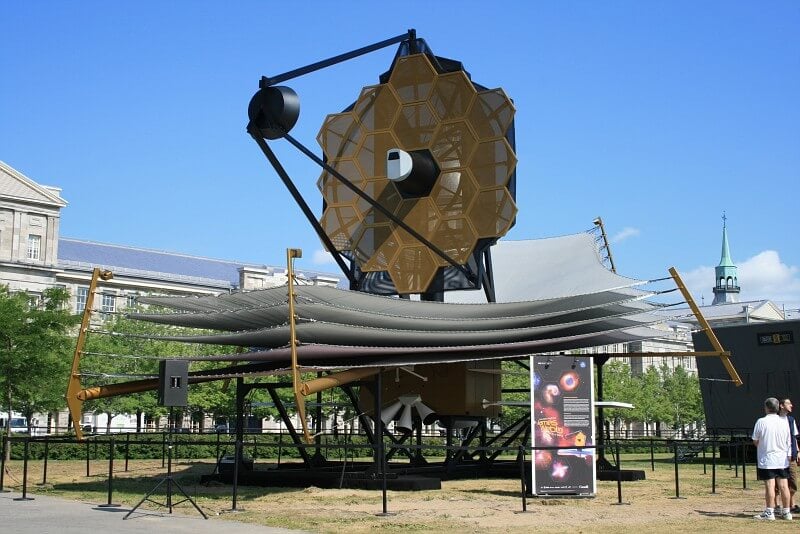
If you don’t know what level of sensitivity will have a state of the art optics space telescope “James Webb”, here’s an example that cited senior project officer and Nobel laureate John Mather. According to him, this huge telescope so powerful that, perhaps, would be able to see the bumblebee on the moon’s surface.
“It will take great patience to be able to photograph this. And, of course, the bumblebee in this moment it is better not to move. The beauty is that the farthest parts of the Universe seem to us just such a fixed,” commented Mather.
Despite the fact that the telescope “James Webb” (JWST) is considered the successor of Hubble, he is not going to become a complete replacement space telescope veteran, but rather complements its effectiveness in all respects. Eighteen hexagonal mirrors JWST will provide telescope viewing area 100 times greater than that of Hubble. In addition, the “James Webb” has equipment that allows him to see through the cosmos in the infrared range of the spectrum much more efficiently than it offers any other telescope with the same opportunity. He can see what others can not see. This possibility, of course, can not but rejoice, but first, engineers and scientists need to check that the “James Webb’s” everything will work as planned.
To make sure that JWST is ready for his mission and he will not face those problems which had to face the Hubble, the engineers locked him in a special chamber inside a Space centre of NASA’s Johnson in Houston. Inside this massive camera will create a simulation of space conditions, specifically congestion, which JWST will have to face soon after its launch.
“Operating temperature in orbit is about 30 degrees Kelvin – just 30 degrees above absolute zero. But we’re going to test JWST at even slightly lower temperatures,” says NASA engineer Julie lender.
“We’re going to check what extra mile can support the equipment and research instruments to have a supply already in orbit.”
Once testing of the telescope in Houston will be completed, it is transported to California, to the factory of the company Northrop Grumman for the production of space satellites. There he “hooked” the two remaining components: a heat shield and the spacecraft, which will be used to deliver telescope into Earth orbit. And then, after more than two decades development and construction, the telescope named James Webb will be ready for launch in October 2018 and the opening of a new era in astronomy.

Telescope James Webb will be able to see the bumblebee on the moon
Nikolai Khizhnyak